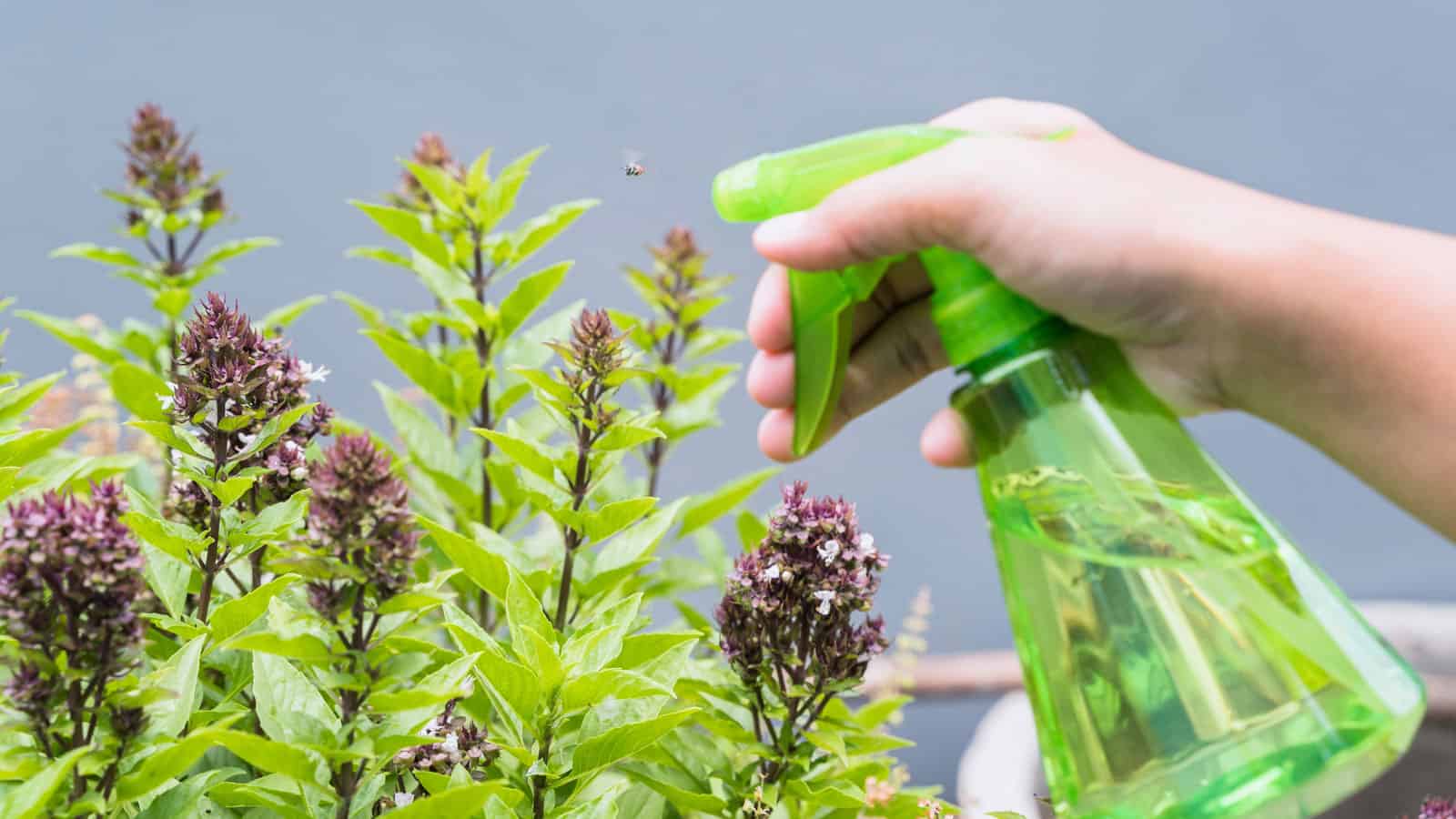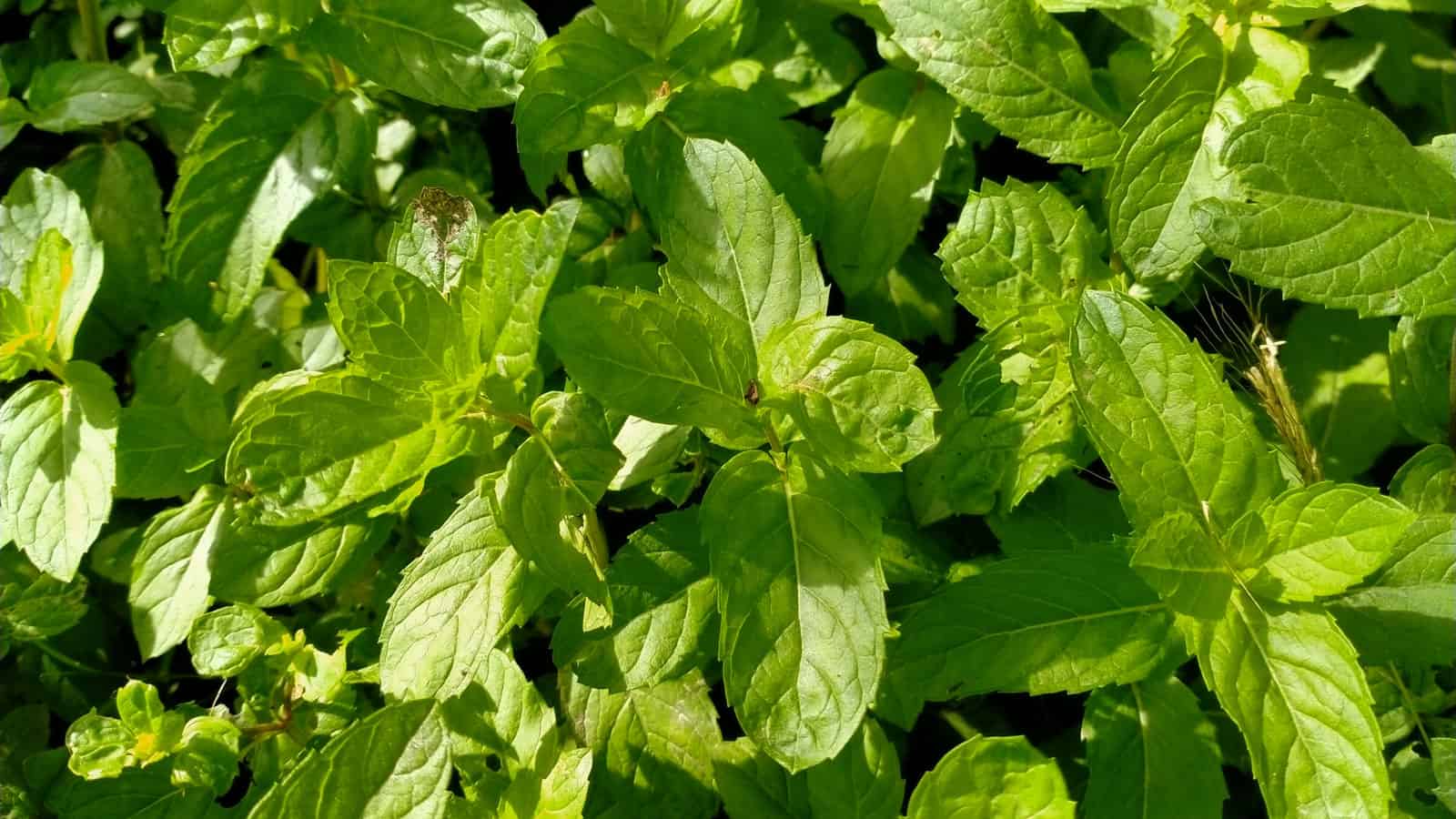Maintaining a vibrant and healthy herb garden largely depends on mastering the fine art of watering.
While herbs aren't overly demanding, giving them just the right amount of water is key to ensuring they flourish —too little water and they might wilt away, while too much can lead to root rot.

Continue reading to uncover the secrets to perfecting this balance, ensuring your herbs don't just survive but thrive!
Tip #1: Check the Soil Moisture Before Watering
First off, let's talk soil moisture—it's key to the happiness of your herbs. To ensure your herbs receive the right amount of water, start by checking the soil moisture:
- Feel the Soil: Use your fingers to check the soil's dampness about 1 to 2 inches down. If it’s sticky, you can probably delay watering, but if it feels dry, your plants need water.
- Use Moisture Meters: These devices can accurately measure soil moisture, removing any guesswork.

- Set a Schedule, But Stay Flexible: While consistency is helpful, adapt your watering schedule based on the soil's moisture level and your herbs' varying needs.
Monitoring soil moisture is a simple yet effective step toward perfecting your herb watering technique.
Tip #2: Water Your Herbs Early in the Morning
Watering early allows the water to seep into the soil thoroughly before the midday sun can cause evaporation.
The cooler morning air also means less stress on your plant's leaves, making it prime time for moisture to reach the roots.
Watering your herb garden in the morning can lead to a deeper, healthier root system and tall, strong plants.
Tip #3: Cater to the Specific Water Needs of Each Herb
Herbs are like people—each one is unique, with its own thirst levels! It's crucial to recognize that your basil might love frequent watering, while your rosemary prefers to stay dry.
Here's a quick guide to help you:
- Basil: Loves moisture! Check daily and water when the top inch is dry.
- Thyme & Rosemary: Enjoy a drier lifestyle. Water these herbs sparingly, about once a week.
- Mint: Keep it moist but not soggy. It enjoys consistently damp soil.
- Cilantro: Requires more water during hot weather but less when cool.
- Parsley: Likes a steady supply of water. Check every few days.
- Oregano: Thrives with less water. Let the soil dry out between watering.
If you're unsure, let's go back to tip #1: stick your finger into the soil up to the first knuckle. If it's dry, it's time to water!
Tip #4: Water Deeply, But Do Not Overwater
Aim to quench their thirst deeply by allowing water to penetrate the soil, reaching the entire root system.
When watering, do so thoroughly, but don't let your herbs sit in water. You want to avoid waterlogged roots, which could lead to root rot.
Again, we go back to tip#1: monitor the moisture level of your soil and respond accordingly, you’ll master the delicate balance of deep yet conservative watering.
It's all about giving your herbs the perfect amount of hydration to thrive without drowning their delicate roots.
Tip #5: Adjust to Weather Conditions
Your herbs' water needs change with the weather, requiring you to be adaptable.
On sunny days, water them in the early morning to ensure the water reaches the roots before evaporation. You can, again, use the soil test here: if the top inch is dry, water them.
Also, overcast days might seem deceiving, but herbs can still dry out, so check the soil and water if needed.
During rainy periods, let nature do its job and only water if the soil dries out after a downpour. Monitoring both the weather and soil moisture is key to maintaining a healthy herb garden.
For a deeper understanding of how weather and seasonal shifts can impact your garden, read this article.
Tip #6: Water at the Base of the Plant
Watering your herbs directly at the base is like giving them a personal drink! By focusing the water where the plant's roots can easily access it, you ensure it goes right where it's needed.
Rather than spraying the leaves, point your watering can or hose's nozzle toward the soil around the stem.
You'll also want to use a gentle flow to avoid soil erosion around the plant. A strong stream can displace the soil and expose the roots, which can put your herbs at risk of diseases and damage.
Tip #7: Consider the Pot Size and Material
When decking out your herb garden, picking the right pot size is more crucial than you might think! Small pots dry out faster, which could mean an unhappy, thirsty plant.
On the flip side, herbs lounging in spacious pots might be too relaxed, soaking in more moisture than they need.
You'll want to choose a pot that complements the herb's size. A good rule of thumb is a pot that is about 4-6 inches in diameter for most individual herbs.
The material of the pot is also important; terra cotta pots are great for herbs that need more evaporation, as they dry out faster than plastic or glazed ceramics.
You'll also want to make sure the pot has drainage holes to prevent waterlogging.
Final Thoughts: Mastering the Art of Herb Watering
Embracing the right watering habits is essential to ensure your herb garden flourishes.

By now, you've got the basics down: checking the soil, providing adequate water, and understanding your herbs' unique needs.
Let's lock in those good practices!
